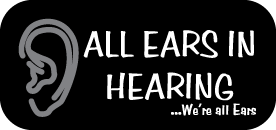Hearing Tests for Children
Hearing Tests
All Ears in Hearing can assess hearing for both children (from 9 months of age) and adults. No referral is necessary and rebates may be available from your private health fund. A Medicare rebate is available for General Practitioner Referrals, Ear Nose and Throat Specialist referral, Neurologist referral or referral through the Chronic Disease Management program.
Testing takes up to an hour and includes a comprehensive assessment which involves a hearing test, speech discrimination test, middle ear function test and a test of cochlear hair cell function. A report will be provided to you or to your GP/ENT.
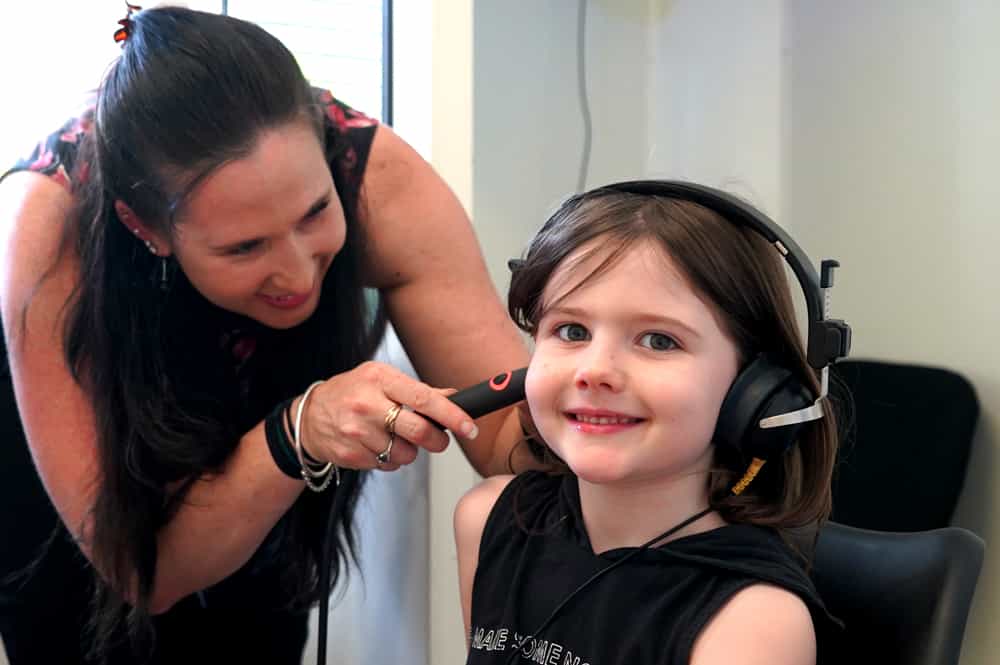
Children Hearing Tests
If you have concerns about your child’s hearing or if they have a speech and language delay or they are experiencing difficulty with listening and/or learning in the classroom, All Ears in Hearing can assess your child’s hearing. We perform a comprehensive assessment for children aged 3 years and over which includes a hearing test, speech understanding test, middle ear function test and a test of cochlear hair cell function. We make the testing process fun!
If your child is experiencing learning or listening difficulties, they may benefit from an Auditory Processing assessment.
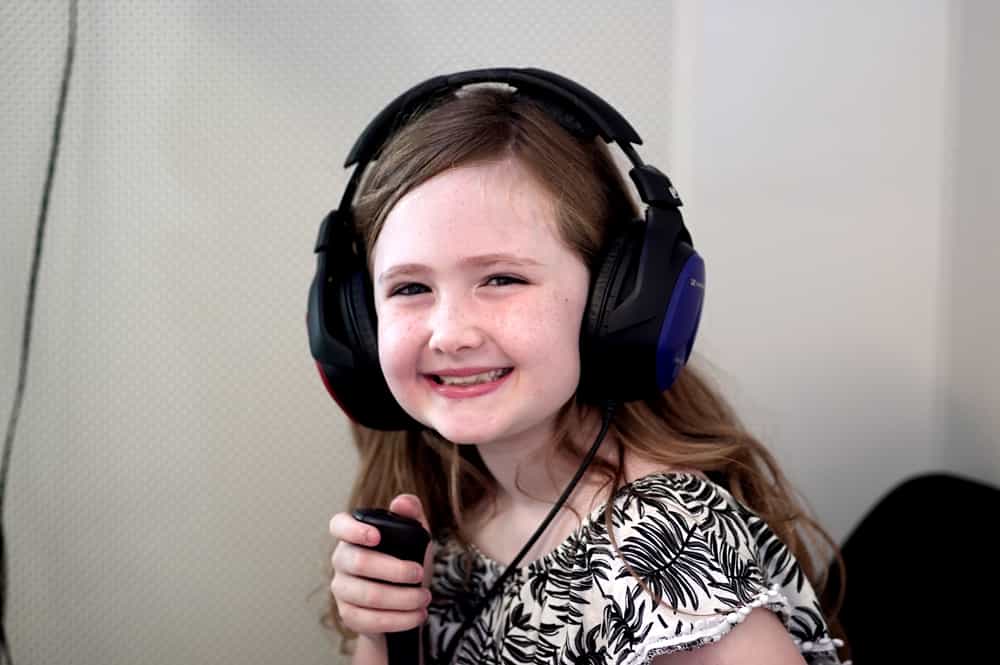
Auditory Processing Assessments
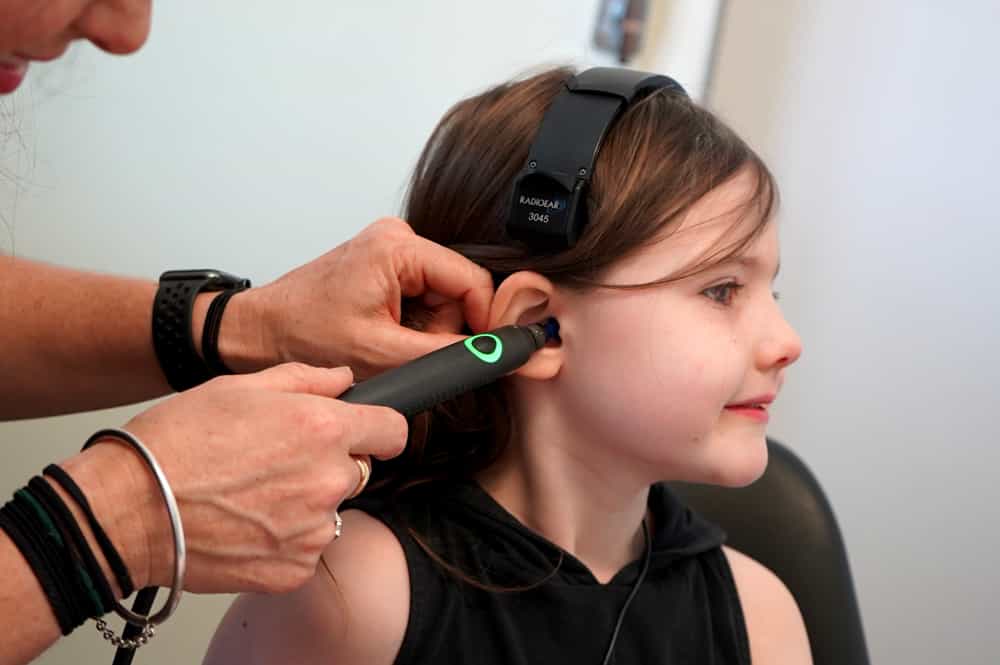
Children with Auditory Processing difficulties typically:
- Behave as though they have a hearing loss especially in background noise
- Perform more poorly in classes that are highly dependent on verbal language skills
- Easily distracted
- Difficulty following multi-step instructions
- Refuse to participate in classroom discussions
- Say ‘huh’ or ‘what’
- Difficulty spelling
- Poor reading skills
Bring your children in for a Hearing Test
Prepare your child for a visit to All Ears in Hearing
We understand that some children may feel apprehensive about their appointment with our paediatric audiologist in Brisbane. To help your child feel more at ease, we suggest that you prepare them in the following ways:
- Communication is key: Children, like many adults, tend to feel anxiety about something they have never done before. An excellent approach is to take the time to explain to your child what they will experience during their hearing test. This way, they know what to expect and may not feel so nervous about the process.
- Bring a stuffed animal: Does your little one have a favourite toy or stuffed animal that helps calm their anxiety? Feel free to let them bring it with them on the day of their test.
- Practice at home: Although it is impossible to replicate the exact process of the test, you can help your child to feel better about their upcoming appointment by giving them a pair of headphones to wear, so they know what the test will feel like. You can play music while your child is wearing the headphones and ask them to respond when the music goes on and off to ensure they understand the premise of the test.
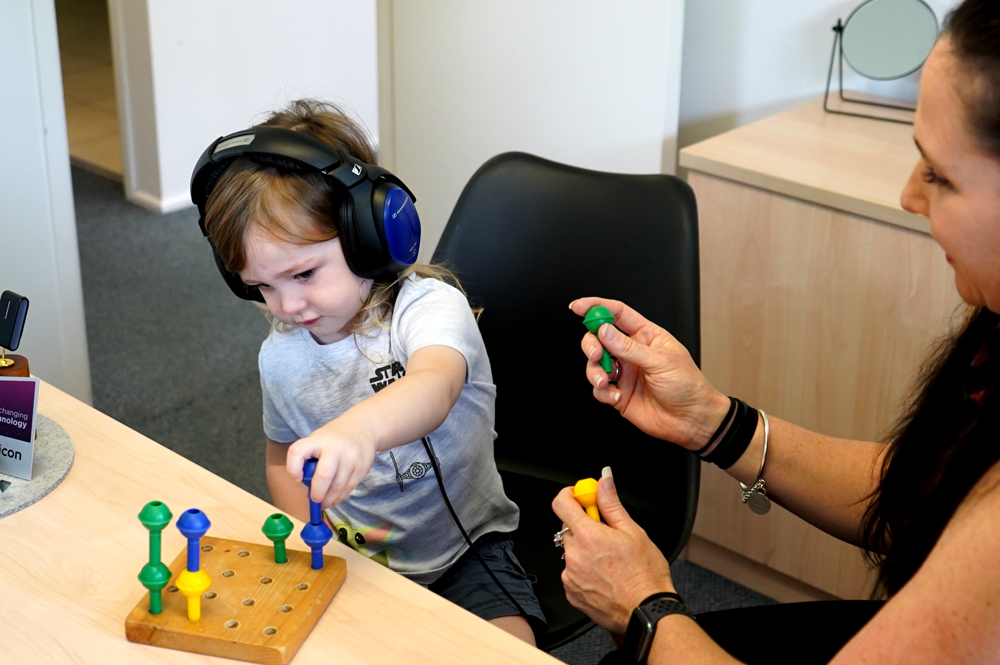
Why trust All Ears in Hearing regarding a hearing test for kids?
The team at All Ears In Hearing understands the concern every parent has about the ear health of their child. We work to provide you with the answers you need regarding your child’s hearing and offer you different treatment options. Do you have questions about our test? We encourage you to reach out at any time.
To schedule a hearing test for your children, reach out to us today by clicking the button below.
Pediatric Hearing Assessment from 6 Months
Understanding Early Childhood Hearing Evaluations
Hearing is one of the most important senses in a child’s early development. It shapes how children learn to speak, understand language, think, and connect with others. Being able to test hearing as early as six months old is a huge step forward — it means we can detect potential hearing differences before they begin to affect speech or learning.
The first few years of life are especially critical for building the brain’s pathways for sound and language. Early detection allows families and professionals to step in quickly with the right support, giving children the best chance to thrive.
How Hearing Develops in Early Childhood
6–12 Months
By six months, babies start to recognise familiar voices and sounds around them. They’ll often turn toward noises, respond to their name, and babble with changing tones. These reactions are key indicators for audiologists when assessing hearing at this age.
By nine months, babies are usually able to locate where sounds come from and show preferences for certain voices or music. They may also begin to understand simple words or gestures.
12–24 Months
During the second year, children experience a big leap in speech and understanding. They start following simple directions, naming familiar things, and putting words together. Testing becomes easier since they can cooperate a bit more, although their attention spans are still short.
2–3 Years
By this stage, toddlers can usually follow two-step directions, talk in short sentences, and play simple games — making hearing assessments more interactive and precise.
How Hearing is Tested
Behavioral Observation Audiometry (BOA)
For babies around six to eight months old, audiologists observe how they react to specific sounds. Tiny changes — like widening their eyes, pausing their movements, or turning their head — can reveal how well they hear. It takes a trained professional to tell which reactions are meaningful and which are just random baby movements.
Visual Reinforcement Audiometry (VRA)
From about six months to two and a half years, hearing is often tested using VRA. The child learns to look toward a sound, and when they do, they’re rewarded with a fun visual (like a toy that lights up or a short video). This method helps determine hearing levels across different pitches important for understanding speech.
Conditioned Play Audiometry (CPA)
For children aged two and a half to three years, hearing tests become a fun game. When the child hears a sound, they might drop a block in a bucket or stack a ring. This playful approach keeps them engaged while still giving accurate results.
Objective (Non-Behavioral) Hearing Tests
Not all hearing tests rely on behavior — some measure hearing function directly:
Otoacoustic Emissions (OAE): A small probe is placed in the ear to play soft sounds and record the ear’s natural response. It’s quick, painless, and ideal for infants.
Tympanometry: This test checks how well the middle ear is working by gently changing air pressure in the ear canal. It helps detect fluid or blockages that might affect hearing.
Auditory Brainstem Response (ABR): Used when more detailed information is needed, this test measures how the hearing nerve and brain respond to sounds. Sensors are placed on the head while the child is resting or asleep, providing reliable results even if the child can’t actively participate.
Creating a Comfortable Testing Environment
A successful test depends on the child’s comfort. Pediatric hearing assessments take place in quiet, sound-treated rooms that are child-friendly — often decorated with bright colours and toys. Appointments are usually scheduled in the morning when children are alert and happy, with breaks allowed for feeding or play.
The Role of Families
Parents and caregivers are a vital part of the process. Before testing, audiologists explain each step so families know what to expect. During testing, parents often stay with their child, helping to keep them calm and focused. Afterward, the results are clearly explained — usually with simple charts and visuals — along with recommendations for next steps or further support if needed.
A Team Effort
Assessing hearing in young children often involves collaboration between several professionals. Audiologists may work with pediatricians, speech-language pathologists, and early intervention specialists to ensure the child’s hearing, speech, and overall development are all supported together.
Considering Cultural and Language Differences
Every family is unique, and hearing assessments are adapted to suit different languages and cultural backgrounds. This might mean using visuals that are more familiar to a child’s environment, providing interpreters, or explaining results in ways that align with family preferences and beliefs.
Technology and Innovation
Modern audiology is becoming more engaging and accessible. New tablet-based games, wireless devices, and even telehealth consultations are making assessments easier — especially for families in remote areas. Automated systems also help detect responses more accurately, improving consistency and reducing test time.
Pediatric hearing assessment from six months old combines science, play, and compassion. By understanding how young children respond to sound — and using both behavioral and objective tests — audiologists can identify hearing issues early, often before they affect speech or learning.
With skilled professionals, supportive families, and age-appropriate techniques, early hearing assessment gives every child the best possible start in developing strong communication and listening skills.
DISCLAIMER:
The information on this website is provided for educational purposes only. We do not support, nor recommend any products or treatments without proper hearing diagnostic and proper hearing evaluation. All users must seek professional advice before beginning treatment as well as inform themselves of known side effects/risks associated with said procedure(s).
